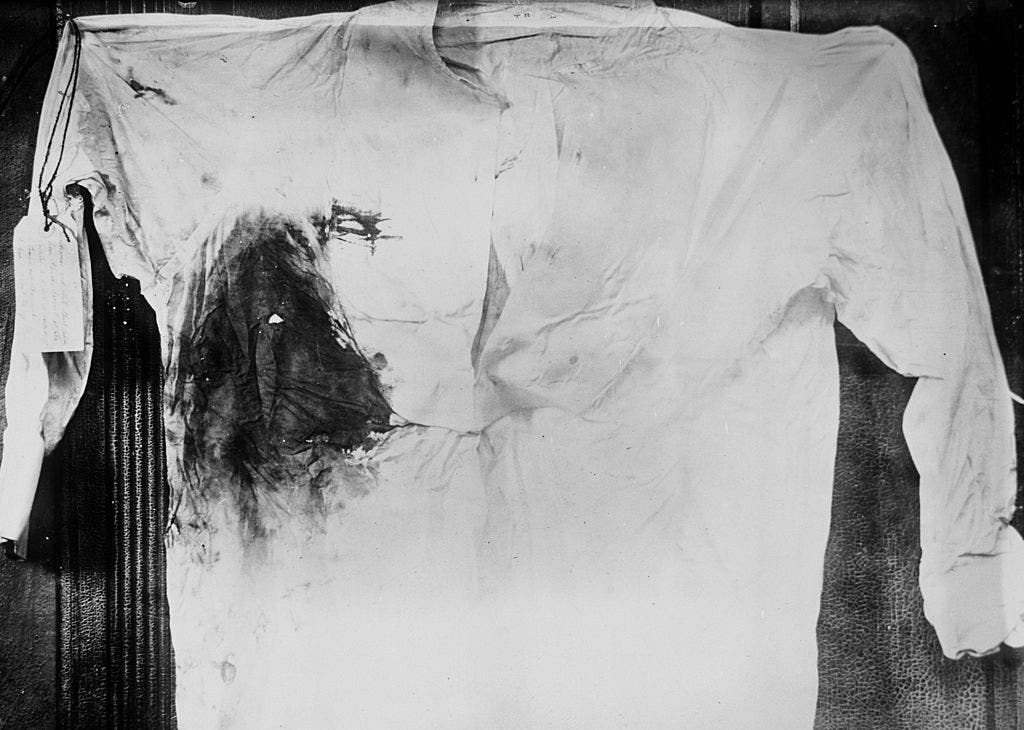On October 14, 1912, former President Theodore Roosevelt survived an assassination attempt in Milwaukee while campaigning for a third term as president. Despite being shot in the chest, he stoically delivered an 84-minute speech that evening with the bullet still lodged in his chest. The force of the bullet was reduced by a metal eyeglass case and a 50-page speech that was rolled up in his coat pocket. Roosevelt had lost the Republican nomination to President William Howard Taft and was running as a Progressive Party candidate, earning the moniker of the Bull Moose Party.
Roosevelt’s response to the assassination attempt solidified his rugged, politically muscular image and further popularized the nickname of the Bull Moose Party. He fended off the assailant, who was later determined to be delusional and was committed to an asylum in Wisconsin. Despite his injury, Roosevelt continued campaigning and was able to garner significant support, winning six states and 27% of the popular vote in the general election. However, the split in the GOP ultimately handed the presidency to Democrat Woodrow Wilson, who won 40 states and 435 electoral votes.
After being rushed to the hospital and then transferred to another facility in Chicago, physicians decided not to remove the bullet from Roosevelt’s chest. He made a quick recovery and was back on the campaign trail within a week of the assassination attempt. Despite his popularity and the support he received in the election, Roosevelt did not win the presidency and passed away in January 1919 at the age of 60. His bravery and perseverance in the face of the assassination attempt solidified his place in American history.
The failed assassination attempt on Roosevelt highlighted the dangers and risks of political campaigning and brought attention to issues of mental health and security for political figures. The assailant, who claimed he was instructed to kill Roosevelt by the ghost of President William McKinley, was considered insane and confined to an asylum until his death in 1943. Roosevelt’s resilience and determination in the wake of the attack demonstrated his commitment to public service and his willingness to continue fighting for his beliefs despite the risks involved.
The incident in Milwaukee, where Roosevelt was shot but continued to deliver his speech, remains a largely forgotten yet sensational event in American political history. Roosevelt’s status as a progressive reformer and his image as a rugged, masculine figure were further solidified by his response to the assassination attempt. Despite the challenges he faced and the eventual outcome of the election, Roosevelt’s legacy as a determined and resilient leader continues to inspire generations of Americans.


